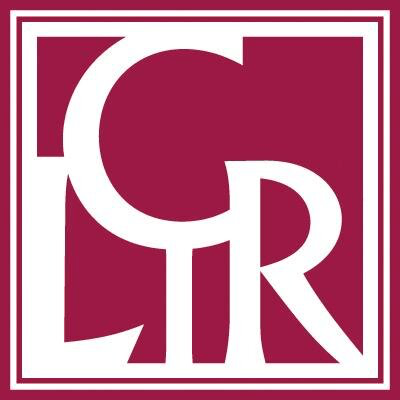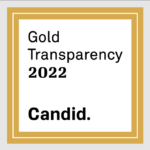Amy Lucko and Jena Winberry of CLIR contributed to this post.
With funding from The Andrew W. Mellon Foundation, CLIR issued the seventh request for proposals for the Cataloging Hidden Special Collections and Archives program earlier this year. Once again a wide variety of cultural heritage institutions have responded, nominating an incredible array of fascinating collections for the competition. Now that our deadline has passed and proposals are safely in the hands of reviewers, it is a good time to reflect on the lessons we’ve learned through our involvement with this initiative, and to think about the future.
As a research organization, CLIR designed the Hidden Collections program not only to highlight and help practitioners address the problem of large backlogs of materials of national significance that are uncataloged and therefore inaccessible and underused, but to also discover and promulgate solutions to that problem. In this respect, the program has far exceeded expectations. Our hundreds of applicants, along with the recipients of the 109 awards to date, have provided tremendous insight into ways that custodians of cultural heritage can create access to otherwise hidden collections.
Program participants have come both from within and outside CLIR’s traditional constituencies. They have included academic, public, and independent libraries; museums and archives of all kinds; research centers; large and small historical societies; large and small museums, arts organizations; historic sites; herbaria; and more. Applicants and recipients have come from distinct professional traditions, care for various kinds of collections, and serve diverse user populations, but they also have a great deal in common and a great deal to share with one another.
Over time, we’ve observed several trends affecting the cultural heritage institutions that have participated in Hidden Collections: the adoption of “more product/less process” attitudes about maximizing efficiency; the engagement of students, scholars or other non-professionals in the production and assessment of collection descriptions; an explosion in the creative use of social media; an increase in the sharing of tools, standards, and practices across institutions; and many other novel approaches to creating access. Here are just a few examples:
- The University of Pennsylvania’s 2010 project, “ Promoting Research Through Rare Book Cataloging Partnerships ,” has used Flickr as a means to solicit information about the provenance of their collections. This effort has evolved into an ongoing and highly popular crowdsourcing initiative, “ The Penn Provenance Project .”
- The Center for Jewish History created and implemented a new processing guide during their 2011 project, “Illuminating Hidden Collections at the Center for Jewish History.” This guide includes a checklist for catalogers to ensure they have created multiple access points to newly described collections across social media and Wikipedia in addition to a comprehensive finding aid.
- The University of Michigan’s 2008 project, “ Collaboration in Cataloging: Islamic Manuscripts at Michigan ,” engaged scholars throughout the cataloging process through staff training, collection assessment, and the generation of searchable metadata. The resulting data made accessible a collection of roughly 1,100 manuscript codices in Arabic, Persian, and Ottoman Turkish, dating from the 8th to the 20th century CE, and informed the creation of a research guide for users of the collection .
- Brown University has used data visualization to expose the wide geographic range covered by the Gordon Hall and Grace Hoag Collection of Dissenting and Extremist Propaganda , currently being processed through a project funded in 2011.
Once uncommon, these kinds of innovations are now part of everyday workflows at many institutions—so much so that they can hardly be called “innovations” anymore. At the same time, what our applicants and recipients have helped us understand is just how challenging it is to make these kinds of “value added” approaches to description a consistent and demonstrably effective part of day-to-day practice.
CLIR’s original decision to fund cataloging and not digitization was purposeful; the creators of the program wanted to make a strong statement about the value of the intellectual work of describing collections. Without coordinated, consistent, and sustainable approaches to description, making investments in digitization seems pointless. This remains as true as it was in 2008. However, given users’ changing expectations and advancements in technology, we now find ourselves in a very different place from where we were when this program was envisioned. Increasingly over the past years and particularly within the last few, we have seen our grant recipients successfully devising and implementing ways to incorporate digitization directly into their cataloging workflows, relying on other external or internal funding. Some of them have found that providing digital surrogates of their unique collections has reaped unexpected rewards, helping them to provide better access to an increasingly broad range of users.
This spring, CLIR is launching an exploratory research and consultation process through which we will reconsider the issue of digitization of rare and unique collections. We have reached a point in our program’s history where a shift in focus can help deepen our understanding of how the cultural heritage professions can support the creation of new knowledge. For this reason, CLIR and the Mellon Foundation have decided that the 2014 cycle of the Hidden Collections program, as currently configured, will be its last. We at CLIR, in cooperation with program staff at the Mellon Foundation, will instead turn our attention to envisioning new ways to promote innovative, efficient, and deeply collaborative approaches to creating access to otherwise hidden collections of scholarly value.
The input of our constituents will be invaluable in informing our next steps. We are keenly interested in hearing your thoughts about the place of digitization among your institution’s priorities. It would be particularly helpful to have responses to the following:
- What level of intellectual control over a collection is necessary before you can plan a digitization project involving unique collections of high interest and usefulness to scholars? In other words, to what degree must a collection be “un-hidden” before you can digitize?
- What is “cutting edge” or “innovative” when it comes to the digitization of cultural heritage collections?
- What measures for cost-effectiveness and sustainability make an investment in digitization worthwhile?
- What might be the value of cooperative/coordinated approaches to digitization of rare and unique materials? How can institutions work together to create broader and easier access to scholars, students, and the general public?
We welcome public comments here on Re:Thinking, or at HCComments@dev.clir.org . We will continue to share our thoughts with the community via follow-up posts on this site that document our discoveries and reflections as we continue our investigation.

